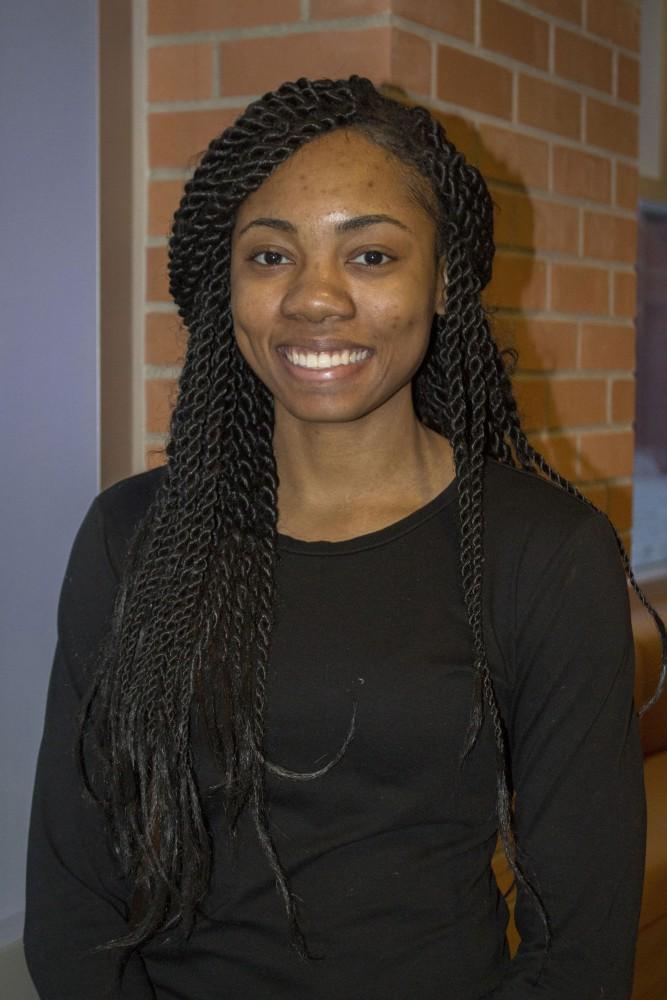Looking at college funding

GVL/Mackenzie Bush – Nekeya Graham, presenter on funding and higher education, Thursday, Feb. 9, 2017.
Feb 13, 2017
All throughout the month of February, Grand Valley State University’s Community Service Learning Center (CSLC) has hosted numerous events related to the funding of higher education within the state of Michigan. To continue this conversation about college tuition and aid, the CSLC scheduled a “Democratic Dialogue” event Thursday, Feb. 9, in the Glenn A. Niemeyer Learning and Living Center.
For decades, students at GVSU have been paying more in tuition than students at other universities of the same population.
“It’s not the highest tuition, and it’s not the lowest,” said Nekeya Graham, a GVSU student and consultant at the CSLC, in reference to GVUS’s tuition compared to other universities’ within the state. “How much money should the state of Michigan spend on higher education? GVSU is the fourth most underfunded school in Michigan.”
What does it mean to be underfunded? To answer this question, refer to the amount of money each school gives to each student.
“Schools that have lower graduation rates yet have the same amount of students get more funding,” Graham said.
Although GVSU has a graduation rate of 70 percent, compared to schools such as Wayne State University with only 32 percent and Northern Michigan University with 48 percent, it continues to receive between two to five thousand dollars less in state funding. Furthermore, the funding that GVSU does obtain is dispersed among its roughly 25,000 students, making tuition more expensive as the population steadily increases.
“Funding should be based off of the graduation rate and how many students actually obtain jobs after graduation,” Graham said. “Students should be fighting for more funding for our school for what we offer and are able to achieve.”
Yet, even with comparably minimal funding and available resources, GVSU has still achieved one of the largest graduation rates and is ranked as one of the top 10 universities in Michigan.
Since many students are unaware of issues regarding funding, the CSLC has dedicated a series of events to providing information on higher education. Upcoming occasions including an interactive program, “Shark Tank,” which will take place Thursday, Feb. 16, from 8:30 p.m. to 10 p.m. in the Holton-Hooker Learning and Living Center Multipurpose Room.
“Students will be able to firsthand do what the government does,” Graham said. For example, students will be able to calculate funding and look at population size, graduation rates and the number of alumni who obtain jobs after graduation.
“Students should be more aware of where their money is going and how it is being dispersed from university to university in Michigan,” Graham said. “When students of the future want to go to college, they should know why the school gets so much money.”






















